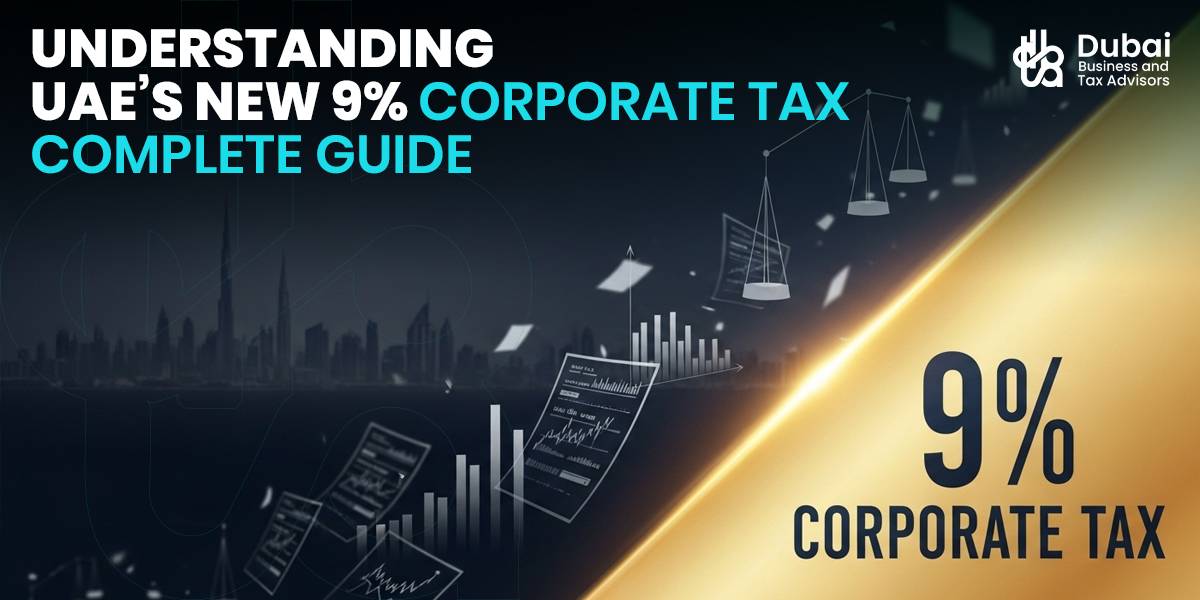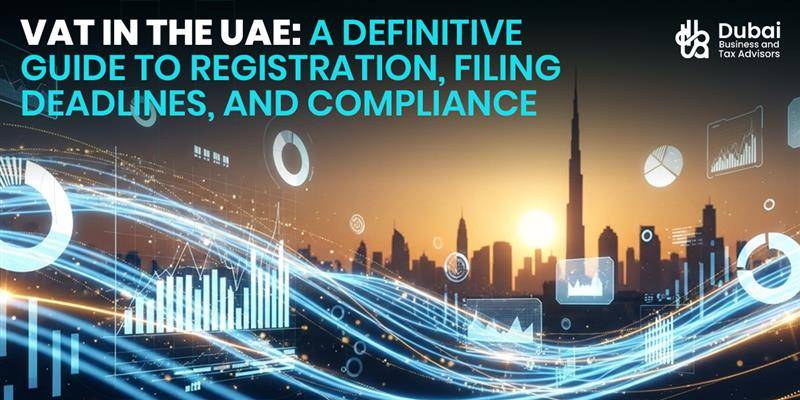Safeguard Your Future with Proactive Risk Management Audits
41% of organizations report experiencing three or more critical risk events in a given period. Dubai Business & Tax Advisors ensures your business is built on firm ground. Our Risk Management Audits and internal audit and risk management reviews identify hidden exposures, strengthen internal controls, and ensure alignment with regulatory standards. Whether you are a startup, SME or multinational, we deliver clarity, confidence and resilience in volatile times.

- 10+ Years Of Experience
- 1500+ Audit Completed
- Financial Experts
- 2500+ Consultation
Why Audits Matter for Every Business
Every business carries unseen risks — from compliance lapses to operational failures and reputational damage. A robust audit and risk management framework becomes indispensable to detecting these vulnerabilities before they spiral.
Through internal audit and risk management and enterprise risk management audit processes, your business gains an objective, independent lens on gaps in control, regulatory blind spots, and latent exposures. Independent audit mechanisms bolster governance and stakeholder confidence, ensuring your operations and financial reporting withstand scrutiny.
Moreover, mature risk oversight correlates with fewer surprise crises, a risk management audit enables proactive mitigation, sharper decision-making, and alignment with global best practices.
A risk management audit is not just about checking boxes, it’s a strategic tool to safeguard and grow your business.
- Reveal control gaps and governance inconsistencies
- Detect fraud risks and financial vulnerabilities early
- Benchmark operations against regulatory and industry standards
- Translate audit findings into actionable improvements

Our Scope in Risk Management Audits
In a world of rising regulatory scrutiny and evolving threats, simply having processes is not enough. Through our risk management audit engagements, we go beyond surface checks, we dive deep into your governance, controls, and risk framework to ensure every layer holds up under stress. We tailor each audit to your industry and risk profile, bridging compliance with strategy, and positioning risk management as an enabler of growth.
We evaluate every dimension of your risk ecosystem, governance, processes, controls, ensuring that your internal audit and risk management frameworks are both resilient and aligned with strategy.
Our comprehensive audit scope typically covers:
- Governance & Risk Framework Review: examining policies, risk appetite, board oversight
- Process & Control Testing: assessing key financial, operational, compliance, IT controls
- Gap & Vulnerability Analysis: identifying weak links, blind spots, and emerging risks
- Recommendations & Remediation Roadmap: prioritized action plans with accountability
Why Partner with DBTA for Risk Management Audits
We combine global rigor with local insight to fortify your governance and controls. Our internal audit and risk management framework integrates seamlessly with strategic objectives, ensuring every audit not only validates compliance but also elevates business resilience.
- Perform audits remotely across jurisdictions with full data access and collaboration
- Provide deep subject-matter expertise & ongoing advisory throughout the audit process
- Offer transparent fee structures & scope clarity, with no hidden audit costs
Still Confused about taking your decision?
Expertise
Our team includes UK-qualified tax & audit leaders, ensuring your risk management audit is structured with precision and credibility.
Simplicity
We streamline complex findings into clear, operational steps — making adoption easy for management and stakeholders.
Transparency
From upfront scope to final deliverables, we maintain clarity in pricing, methodology, and communication
Auditing Risk, Enabling Resilience: Your Strategic Process
We execute a rigorous Risk Management Audit Process that aligns with your business priorities. Across governance, operations, compliance, and IT, we map exposures, assess control strength, and build a resilient roadmap that strengthens operations and supports growth direction.
Risk Identification & Profiling
We systematically uncover potential threats, operational, financial, compliance, strategic, across all functions. Each identified risk is described with causes, impacts and affected areas, then added to your organization’s risk universe for prioritization
Risk Assessment & Scoring
We evaluate each identified risk by combining quantitative metrics (e.g. probability, monetary impact) with qualitative insights (e.g. reputational harm). The result is a risk score that helps differentiate high, medium or low priority risks for audit focus.
Audit Planning & Resource Allocation
We craft an audit plan aligned with your risk profile: selecting key modules, sampling sizes, timelines, and resource assignments. This ensures our enterprise risk management audit concentrates on areas that most critically influence your business.
Fieldwork & Testing
Our auditors execute in-depth testing procedures: walkthroughs, control testing, transaction verification, and evidence gathering. We validate whether your existing controls mitigate risks effectively and flag where controls fail or require enhancement.
Reporting, Remediation & Monitoring
We deliver a clear report with prioritized recommendations, assign risk owners, and institute continuous monitoring mechanisms. Through periodic review cycles, your risk management audit evolves into a living, responsive governance tool.
The Hidden Cost of Delay: What Postponing Risk Audits Costs You”
When you delay a risk management audit, hidden vulnerabilities compound, controls erode, exposures deepen, and decision-making becomes reactive rather than proactive. Over time, this negligence can ripple into compliance breaches, financial loss, and reputational damage that’s hard to reverse.
You may be at risk if you:
- Operate without up-to-date internal audit risk management insights
- Overlook emerging threats in IT, finance, or operations
- Fail to document changing risk environments or control changes
- Miss early warning signs of fraud, errors or regulatory lapses
- Lack independent assurance on your risk profile
- Are unprepared for external scrutiny or due diligence
Delaying your audit doesn’t save cost, it magnifies it. Let us help you act early, close gaps, and protect your enterprise from avoidable turmoil.


Ready to Fortify Your Business? Start Your Risk Audit Today
Procrastinating on a risk management audit isn’t a minor postponement, it’s an open invitation for unchecked vulnerabilities to grow. Without timely oversight, control weaknesses accumulate, regulatory gaps widen, and threats that once were manageable can spiral out of control. A strong internal audit and risk management function ensures early detection, enabling you to stay ahead, not play catch-up.
When audits lag, decision-making is hampered by uncertainty. Leaders are deprived of critical insights, and systems lose the agility to adapt in volatile environments. Worse, external auditors, regulators, or investors may view delays as red flags, triggering deeper scrutiny or costly corrective actions.
You should act before consequences hit:
- Escalation of financial, operational or compliance losses
- Regulatory penalties or audit disallowances
- Erosion of stakeholder confidence and brand reputation
- Missed early detection of fraud, cyber threats or control failures
- Inefficient resource allocation due to unknown risk exposure
- Difficulty in integrating audit findings into strategy
Don’t wait for damage to force your hand. Engage now, gain clarity, and secure your enterprise with a professional risk management audit before the vulnerabilities become irreversible.
UAE Business Setup - FAQ
What is a Risk Management Audit?
Essentially, a Risk Management Audit checks how well a company spots, understands, handles, and watches over its potential problems. It digs into whether those safeguards truly work, pinpoints weak areas, then assists leaders in keeping dangers contained – making sure guidance supports goals and everyone trusts the business can bounce back.
What is the difference between a risk audit and regular audit?
Unlike typical checks of finances, rules, or daily work, a risk audit dives into risk management itself. It looks at the plans, safeguards built in, acceptable levels of risk, also whether goals match what really happens. This type of review considers future possibilities instead of just reviewing past performance.
Which categories of risk are covered in a risk audit?
Typically, risk reviews investigate finances, operations, adherence to rules, long-term plans, computer security, deceit, public image, alongside ecological concerns. These checks determine if current safeguards work well, also if fresh dangers get noticed and handled promptly.
What triggers the need for a risk management audit?
Big shifts, like companies joining forces or growing rapidly, can prompt a review. So can new rules, fresh dangers such as cyberattacks or environmental concerns, mistakes made, suspected dishonesty, demands from people who’ve invested money, or even just when enough time has passed since the previous checkup. As risks become clearer, an audit brings things back into focus.
How frequently should risk audits be conducted?
How often these happen varies, it’s tied to what a business does, how big it is, also its intricacies. Typically, companies do this once a year, sometimes twice. When things shift quickly, or if what’s at stake is considerable, regular check-ins every three months, or even more often, make good sense. Keeping a close watch guarantees you stay on track as conditions change.
Who is responsible for a risk audit?
A risk audit is typically conducted by internal audit teams, possibly supplemented by external specialists to ensure independence. The audit function should report to senior governance bodies (e.g., audit committee) to safeguard objectivity and ensure that findings and recommendations are acted upon.
Can small businesses benefit from risk audits?
Yes, small and medium enterprises may believe risk audits are only for large firms, but even lean operations face exposures. A tailored internal audit and risk management review can help SMEs detect operational blind-spots, scale more safely, and raise confidence with partners, customers, or investors.
Why is a Risk Management Audit essential for businesses?
Ignoring a risk check can mean unseen weaknesses, impacting finances, rules followed, daily work, or how others see you. A good risk review finds problems quickly, improves protections, then helps you prepare for what’s next. This isn’t just about ticking boxes; it’s smart protection.
Is a risk audit mandatory?
It depends on the jurisdiction, industry, and regulatory regime. In some sectors (financial services, healthcare, regulated industries), risk audits or internal control reviews are mandatory. Even when not required, they remain strategic best practice and signal strong corporate governance.
How does a risk audit support business continuity?
By identifying critical vulnerabilities, controls, dependencies, failure points, a risk audit helps organizations plan response, redundancy and recovery strategies. It ensures that during crisis or disruption, business continuity is structured, with mitigation paths already validated rather than improvised.
What are the stages of a Risk Management Audit?
The process typically includes risk identification & profiling, risk assessment & scoring, audit planning & resource allocation, fieldwork & control testing, reporting & remediation planning, and finally follow-up & monitoring. Each stage builds insight and moves the organization from detection to action.
How is risk identified during an audit?
Auditors gather information via interviews, process mapping, document review, data analytics, benchmarking, and scenario review. They develop a “risk universe,” capturing known and latent risks, linking each to business objectives so that oversight is comprehensive and aligned with strategic goals.
What is risk scoring in an audit?
Risk scoring assigns each identified risk a score, combining probability and impact metrics, plus qualitative factors (velocity, trend, control maturity). This helps prioritize resources and focus audit coverage on high-risk areas that pose the greatest threat to the organization’s objectives.
How is audit planning performed?
After risk scoring, auditors define scope, sample sizes, timelines, objectives, and resource allocation. They design procedures to test critical controls. The plan ensures that the audit and risk management effort is efficient, focused, and structured to address top risks with sufficient depth.
What happens during fieldwork & control testing?
Auditors perform walkthroughs, re-performance, sampling, inspection, confirmations, and inquiry tests. They validate whether controls operate as designed and detect deviations. This phase surfaces control breakdowns, gaps, and ensures evidence substantiates findings before drafting recommendations.
How do auditors select samples?
Sampling is either statistical (random, stratified) or judgmental (targeted based on risk). The idea is to select a representative subset of transactions or controls that gives assurance over the larger population, while controlling sampling risk and resource effort.
What does audit reporting include?
Reports typically cover scope, methodology, findings (gaps, risks), root causes, risk ratings, prioritized recommendations, management responses, and timelines. This becomes the basis for action, accountability, and governance oversight. The report is meant to be a roadmap, not just a list.
How is remediation and follow-up handled?
After reporting, management actions are tracked. Auditors retest controls, monitor progress, and report to leadership and oversight committees. Follow-up ensures that findings are not left pending and that real business improvement occurs over time.
How is confidentiality maintained?
Audit teams operate with strict data governance, secure storage, limited access, use of encryption and NDAs, and role-based permissions. Handling sensitive documents and findings with care ensures trust and integrity, especially when navigating cross-border operations.
How is feedback and closure managed?
Once remedial actions are validated and tested, auditors issue a closure report and lessons learned. They incorporate feedback, refine future planning, and may revisit risk models. Closure communicates that the audit is complete and that improvements take root.
What is Enterprise Risk Management (ERM)?
Enterprise Risk Management (ERM) is a holistic, structured process integrating risk identification, measurement, response, monitoring, and reporting across the entire organization. It aligns risk appetite and strategy, enabling management and boards to make informed decisions in volatile or complex environments.
How is ERM different from a typical risk audit?
While a risk audit focuses on validating controls and risk practices, ERM embeds risk into strategic planning and decision-making across the full organization. ERM is continuous, proactive, and linked with corporate objectives; audits feed into that ecosystem for assurance and evaluation.
What role does governance play in risk management?
Governance sets tone at the top, risk ownership, policy framework, escalation paths, oversight mechanisms, and accountability. In ERM and audits, governance ensures the audit body is independent, that risk appetite is defined, and that findings are escalated appropriately for resolution.
What is the “Three Lines of Defense” model?
This model outlines how risk is managed: First line (operational management owns risks), second line (functions like risk & compliance monitor), third line (internal audit assures independently). The model clarifies responsibilities and ensures layered oversight across control functions.
How do audit & risk teams collaborate?
Audit and risk teams should integrate: risk teams define threat landscape, while audit teams validate execution. Close alignment lets auditors target high risk, reduce duplication, and ensure audit results feed back into risk management decisions.
How does audit influence strategic decisions?
Audit findings, especially around systemic control or process gaps, can reframe resource allocation, project prioritization, expansion, cost control, or governance policy. Leadership uses audit insight to make evidence-driven decisions and adjust strategy in response to risk exposure.
How does ERM improve stakeholder confidence?
Implementing enterprise-level risk oversight signals to investors, lenders, regulators, and customers that your business is disciplined, proactive, and trustworthy. Coupled with periodic audit validation, it enhances perception of stability, governance, and long-term viability.
Can risk audits link to performance metrics?
Yes. Audit results often feed into key performance indicators (KPIs) or balanced scorecards, measuring control breakdowns, remediation speed, residual risk levels, or process compliance rates. This turns audit from compliance to a performance lever.
How do emerging risks factor into audits?
Emerging issues like cyber threats, ESG, climate, AI, supply chain disruption must be woven into audit scope. Auditors use scenario modeling and horizon scanning to ensure future risks are considered, not just historical exposures.
How do you maintain continuous risk assurance?
An effective program cycles audits, monitoring, self-assessments, dashboards, and real-time alerts. This transforms audit from a periodic event into a living system of oversight, where changes and deviations are flagged early and acted upon.
What is audit risk and how is it managed?
Audit risk is the risk that the auditor gives an unqualified opinion when material misstatement exists. It’s controlled by assessing inherent risk, control risk, and detection risk, and adapting audit procedures accordingly, so that the residual audit risk remains acceptable.
What is inherent risk?
Inherent risk refers to the susceptibility of an assertion to misstatement assuming there are no controls. It persists because of complexity, judgment, change, or volatility. Auditors assess inherent risk first to shape how aggressively controls must be tested.
What is control risk?
Control risk is the risk that internal controls fail to prevent or detect a material misstatement. Even well-designed controls can falter. Audit procedures test their effectiveness, and weaknesses must be remediated or alternative procedures applied.
What is detection risk?
Detection risk is the risk that audit procedures fail to detect a material misstatement that exists. To manage it, auditors increase sample sizes, enhance analytical procedures, or adjust testing rigor. Detection risk is inversely related to audit quality.
What is residual risk?
Residual risk is the level of risk that remains after controls and mitigation. In audits, the objective is to ensure residual risk is within risk appetite or acceptable threshold; if not, further mitigation or management action is required.
How do analytical reviews contribute to audits?
Analytical procedures compare trends, ratios, and expectations to flag anomalies. In a risk audit, these reviews help identify deviations, outliers or risky areas for deeper inquiry. They complement sampling and control testing.
What is materiality in audits?
Materiality is the magnitude of omission or misstatement that influences decisions of users. Auditors set quantitative and qualitative thresholds, and any findings above material thresholds become central to reporting and remediation.
How do you reconcile differences in UAE vs UK IT audit standards?
You adopt a combined control baseline (e.g. ISO 27001) and layer jurisdictional add-ons. Your audit framework should cover both UAE regulatory requirements and UK standards (or EU, Pakistan) so you don’t have contradictory controls in different zones.
How do auditors test for fraud risk?
Auditors design fraud risk procedures including unpredictable testing, journal entry reviews, data mining, override tests, whistleblower input, and professional skepticism. Standards like SAS 99 require explicit consideration of fraud risk in the audit design.
How is audit quality assured?
Quality assurance includes internal peer reviews, external quality assessments, adherence to professional standards (IIA, ISA), ethical oversight, continuing education, and post-engagement feedback loops. This ensures consistency and credibility.
EXCELLENTTrustindex verifies that the original source of the review is Google. Highly recommend working with Aurangzaib. Reliable and very helpful.Posted onTrustindex verifies that the original source of the review is Google. I recently began exploring the idea of relocating to Dubai and was looking for a specialist firm that could guide me through the tax implications, company setup, and lifestyle planning. Being based in the UK, I wanted someone who understood both jurisdictions and could offer more than just surface-level advice. After shortlisting a few firms, I came across Dubai Business & Tax Advisors. From the first call, they were incredibly responsive, arranging a Zoom consultation the very next day. Unlike some firms that gave me generic promises or pushed me straight into incorporating a company, the DBTA team took the time to understand my full situation including my income sources, existing UK tax position, family setup, and long-term plans. What really stood out was their honesty. After a full assessment, they advised me not to proceed with the move, as the supposed tax advantages wouldn’t apply to me in the way I'd been previously told by all other consultants so called specialists. They even walked me through the risks if I’d followed the wrong advice. They could have easily pushed for a company setup and taken the fee, but instead, they acted in my best interest. That kind of integrity is rare. I’d highly recommend DBTA if you want strategic, well-researched, and genuinely client-first advice not just a service provider, but a true advisory partner.Posted onTrustindex verifies that the original source of the review is Google. Dubai Business and Tax Advisors .ae are an invaluable has been an invaluable partner in managing business accounting and tax needs in both Dubai and the UK. Their expertise, efficiency, and attention to detail make navigating complex regulations seamless. The team is highly knowledgeable and always available to provide tailored guidance. I highly recommend their services for anyone looking for reliable financial and tax support both in the UK and UAE.Posted onTrustindex verifies that the original source of the review is Google. I reached out for help with UAE tax residency planning and walked away with a full strategy for my business and family relocation. Highly knowledgeable teamPosted onTrustindex verifies that the original source of the review is Google. Zaib and his team made the corporate tax registration process smooth and hassle-free. Their professionalism and expertise were evident at every step. Highly recommend their services!
Our Trusted Partners





Our Client Testimonials
Our clients, ranging from startups to multinational corporations in Dubai, benefit from our comprehensive and strategic approach to business advisory. Our team of highly qualified business and tax advisors takes pride in ensuring regulatory compliance, operational efficiency, and sustainable long-term success for businesses across various industries





Khalid Al Rashid
Layla Hassan
Omar Saeed
Noor Al Mazrouei
Faisal Hamdan
Connect with Reliable Dubai Business Consultants
Certified Chartered Accountants
Be stress-free with top-tier accounting and financial expertise in Dubai.
Ensure Data Confidentiality
Using advanced accounting technology and controls for data security.
Achieve Measurable Results
Making sure your financial strategy aligns with your goals and objectives.
Speak to an Expert! Call Now for a Free Consultation. +971568191060 or
Latest news & articles

Understanding UAE’s New 9% Corporate Tax Complete Guide: Navigating the 2025 Compliance Imperative
Read More »



